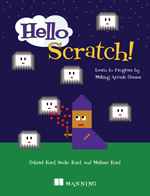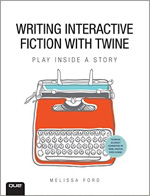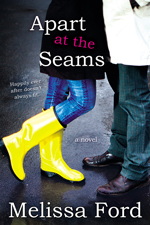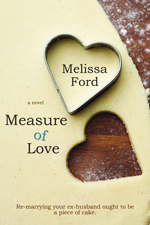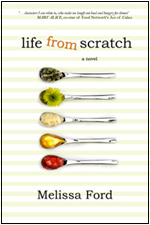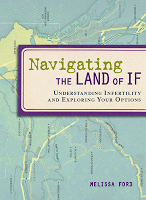Category — SuperBetter
SuperBetter: Too Statements and Celebrations
There were two back-to-back ideas that popped up for me in SuperBetter that both applied (at least, for me) directly to infertility.
Too Statements
The first was an exploration of “too” statements on page 189 – 190: “I’m too sad to go to dinner with my friends,” or “I’m too overwhelmed to figure out this insurance stuff,” or “I’m too scared to explore a different path out of infertility.” It would be an interesting exercise to go through the journal I kept before the twins and count how many times the word “too” appears in the pages.
I still make a lot of “too” statements, and I like Jane McGonigal’s advice because she isn’t telling me not to make them. Saying or thinking “too” statements is okay as long as you say the rest of her sentence.
All you have to do is say the first part and then tack on an “and” statement, pointing out that you have every personal reason not to do X but you’re going to do it anyway.
So it would become, “I’m too sad to go to dinner with my friends, and I’m going to go anyway and try not to look at Sarah’s enormous belly.” Or “I’m too overwhelmed to figure out this insurance stuff, and I’m going to call the company and write everything down so I can figure out what is covered.” Or “I’m too scared to explore a different path out of infertility and I’m going to get over that fear by spending time reading about a different option and seeing if it’s right for me.”
See, you still get to feel whatever you need to feel, but it doesn’t stop you from continuing to move forward through life. Just a small tweak in how you phrase something to yourself, but it makes a big difference. Try it.
Celebrating Your Friends
The second was something that is a sensitive topic in this community: being happy for someone else. It is easy to be happy for others when you feel happy for yourself, but it is also a skill to help another person celebrate their “win.”
The book assumes that someone’s ally is in a mental space to celebrate and support another person, though what isn’t covered is when you are someone else’s support system because you are both trying to attain your goals, and someone reaches their goal first. How do you engage in the active constructive responding on page 251 when one person has good news and the other person doesn’t?
I think active constructive responding — “taking someone’s good news or success and helping them really savour and celebrate it” — is difficult for a lot of people to do. As this site, Go Strength, states, “When people share good news, they want you to share in their joy. And this goes far beyond just a pat on the back. Conveying authentic interest, pride, and even curiosity in someone’s good news are all hallmarks of ACR.”
So how do you shriek with happiness and get excited to see ultrasound photos? Is this impossible to do when you’re in the throes of your own crisis?
Again, McGonigal has sound advice: ask three questions. While she doesn’t address this particular situation — your ally is still drowning while you have reached shore — she does give a concrete way you can practice ACR without having to fake joy. Ask three questions, any three questions. Asking question shows interest. It gives attention. And it gives you a chance to repeat their answer, which shows that you’re listening AND lets them hear their own good news again, which is enjoyable.
And you? You can make a “too” statement to yourself and add the “and” statement to get through the moment. Maybe in getting through the moment, you feel real happiness for your friend, too, even if that happiness comes with an “and.”
What do you think of McGonigal’s advice?
I’m writing about SuperBetter the app as well as SuperBetter the book because… well… I learned about them via a podcast and now I want to talk about everything I’m learning on them. If you want to talk about them, too, join along. If not, skip the posts marked SuperBetter.
February 28, 2017 2 Comments
SuperBetter: Bad Guys
When we last left off, we were identifying power-ups; little things that make you happy pretty much 100% of the time. I was lamenting that Jane McGonigal’s power-ups in SuperBetter were wholesome — a handful of almonds or petting her dog — and mine felt less healthy — watch a few minutes of a Dungeons and Dragons game on YouTube or play a round of Shuffle Cats. But cats playing cards beats out complex proteins in my book every day of the week.
Power-ups are important. As she says on page 169, “It’s much easier to find little ways to feel happy and connected than it is to block or prevent negative emotions entirely.” You don’t want to feel stressed, but making yourself not feel stressed is harder than making yourself happy for a few minutes with Shuffle Cats (Shuffle Cats makes you happy, too, right?). And by making yourself happy for those few minutes, you break the cycle and may even have a fighting chance of making yourself not feel stressed. Win-win!
You need these power-ups in place if you’re going to fight your bad guys. Your bad guys are the ways you keep yourself from your goals. They’re your emotional obstacles.
Naming them takes away some of their power because once you have proven their existence by giving them a name and description, you can figure out how to fight them. You can dismiss them. You do not need to give them more power than they deserve.
I sat down at Whole Foods and started making a list. There was Imogen the Imposter, who makes me doubt my capabilities. (Side note, I really wish I hadn’t named her Imogen because I love that name and intended to use it on a future pet.) Seymour the Self-Doubter. He’s actually a lot like Imogen. They may be dating. They mess up my life in the same way. Tess the Talker-Outer, who convinces me not to try things. Walter What If, who freaks me out with his predictions. Wally the Waster of Time.
Was it a little silly? Yes. Yes, I felt silly sitting at a table at Whole Foods, writing out a list of self-sabotaging traits and pairing them with drippy names. At this point, I know in the future that I (and perhaps you, if you’re doing this, too) will put together an opposition team to fight these bad guys, but when I did this exercise, I didn’t understand why I had to identify the bad before I identified the good.
But now, looking back at it, I think it’s important to know what you’re up against before you choose the correct tools to fight it. Everyone has self-doubt, everyone has little what ifs that tug at their heart. (I say “everyone,” even though I know, since this is the Internet, that I’m going to get a comment from someone informing me that they have never felt a moment of self-doubt or fear in their life.) But every internal self-doubt or what if generator is unique. And you need to know your stumbling blocks — identify them, name them, picture them — and in doing so, you will know exactly how to fight them.
So who are the super villains who haunt your brain and heart?
I’m writing about SuperBetter the app as well as SuperBetter the book because… well… I learned about them via a podcast and now I want to talk about everything I’m learning on them. If you want to talk about them, too, join along. If not, skip the posts marked SuperBetter.
February 7, 2017 5 Comments
SuperBetter: What Are Your Power-ups?
Bleak. That is the word that pops into my head when I listen to the news or read the paper or peruse Facebook. Every new development about the incoming administration makes me want to step away from everything and everyone; huddle on the floor with Truman, count down the 1,460 days until the next term. Except. I know that the damage inflicted on the next four years will have repercussion well into the future.
See? Bleak.*
When deep breaths don’t work — and I’ll be frank, I’m past the point of deep breaths — there are Jane McGonigal’s SuperBetter power-ups. Power-ups are items in video games that give the player more energy or extra powers or additional time. For instance, you may catch a bouncing star on the screen and suddenly be able to run through enemies without being affected or eat a flower and be able to spit fireballs.
McGonigal defines a power-up as any “positive action you can take, easily, that creates a quick moment of pleasure.” So going to Disney World would definitely make me happy, but it isn’t easy. And listening to music is easy, but it doesn’t make me happy. This list is personal — it’s what brings YOU pleasure that is easy to access or do.
I’ve been struggling to come up with my power-ups in the face of this bleakness; things that bring me as much (if not more) happiness than the news brings me sadness. Like I put a few apps on the list because they always make me happy: Shuffle Cats, Hay Day, Solitaire, Backgammon, Desert Golfing, Mini Metro. They all make me happy, but do they make me happy enough? If I’m being honest, they make me feel a little shallow, which brings down the pleasure factor.
[It doesn’t help that McGonigal’s are so virtuous. Singing loud? Dancing in the living room? Eating a handful of almonds? It’s hard to say, “Making a fake metro system on an app makes me happy for five minutes” when you notice other people are talking about getting out into the sunshine and going for a walk with their dog. I don’t like sunshine, and I don’t have a dog.]
I’ve always kept a “like” list at the front of my bullet journal, so I mined it for my power-ups. I like magic, so I thought about watching magic tricks on YouTube. There are a lot of books I love, and I could read a chapter in one of them. Coffee. I am a big fan of coffee, and it would make me feel happy to have a cup of iced decaf in the middle of the day. And I am a fan of chess. I could play a game of chess.
The book helps you to think up power-ups with a list of questions on page 176. What’s a song that makes me feel powerful? “Forgotten Years” by Midnight Oil. (Maybe? I don’t know if powerful is the right word. But it feels like we’re currently living the history that the next generation will claim as “these should not be forgotten years.”) Almost anything They Might Be Giants makes me feel happy, but that’s not the same as powerful.
Who makes me feel calm? Josh. What physical activity energizes you? Nothing. I’m an indoor kid who prefers to read and not run. Is there a place that I can get to easily that makes me happy? My bed.
This is sounding like a real downer of a power-up post. But here’s the thing she points out: Happiness begets happiness. When you are feeling bleak, you use a power-up and it barely does anything. But you use a power-up and another power-up and another power-up, and at some point, you start to actually feel happy rather than using bits of forced happiness, and that real happiness begets more real happiness until you’re using the power-ups as a little burst from time to time instead of a way to get through the day.
I decided to put one power-up into effect every day: I am going to read for 20 minutes during lunch. For 10 years, I’ve eaten lunch at my desk and worked through the meal. I’m going to take two weeks to read mid-day and see if that changes the way I approach the news knowing I have that break to look forward to and energize me for the second part of the day.
What are five things that consistently make you happy or feel good?
* In my defense, if I had written this post when I originally wanted to write this post, I would probably have felt more energy for power-ups. But I made the note to write about this on October 14th, back when I foolishly believed we’d spend the next four years moving things forward instead of backward.
January 15, 2017 6 Comments
SuperBetter: What’s the Best Thing That Can Happen?
Sometimes when I’m reading SuperBetter I think to myself, Jane McGonigal clearly does not have a bleak outlook of the world. Then I think to myself, “Well, good for her.”
I am more Strindberg than Pollyanna. I have more of a Siberian vs Maui internal landscape.
Which is why I really struggled with the idea of asking myself, “What’s the best that could happen?” (p. 143).
I am very comfortable asking myself what is the worst that can happen. I am excellent at making mental lists of worst case scenarios and then coming up with possible solutions for those situations. I am less comfortable allowing my mind to go to the best possible place. Moreover, I’ve found that once I’m there — in that best that can happen mental place — there isn’t much more to do except to get on with the happily ever after. Worst case situations gives you plenty to mull over or ways to feel like you are proactively working towards something. Best case situations can make me feel complacent. Like I’ve reached an end point and there is nothing left to do.
But, as McGonigal also points out on page 145, “Playing a game is a voluntary attempt to overcome unnecessary obstacles.” In other words, the whole point of games is to set up a difficult situation and ask the player to try to overcome it. She makes the case with golf. The point is to get a small ball into a hole, but instead of having people walk over to the hole and place the ball in said hole, the game is to use a stick to hit the ball a great distance and see if you can walk around a grassy space to find said ball again. Not very efficient. Probably a lot of fun. (I say “probably” because I don’t play golf, but I have to assume it’s fun or we wouldn’t have so much land tied up in golf courses.)
I’ve been approaching life with the belief that the worst-that-can-happen mindset is the setting up unnecessary obstacles. I mean, worrying certainly isn’t efficient. I rarely come up with a great solution before something terrible has happened, and how often has my worrying really staved off disaster?
But in McGonigal’s case, she’s saying that the challenge mindset — that best-that-can-happen mindset — is making life into a game. She states, “It can empower you to find the unnecessary obstacle within the uninvited challenge you face” (p. 145).
In other words, what is a small obstacle inside a much larger problem that you can tackle right now to stay in the game? Look at your biggest life challenge right now and think to yourself, “If I try to tackle this, what is the best that can happen?”
I’m writing about SuperBetter the app as well as SuperBetter the book because… well… I learned about them via a podcast and now I want to talk about everything I’m learning on them. If you want to talk about them, too, join along. If not, skip the posts marked SuperBetter.
December 28, 2016 1 Comment
SuperBetter: The Threat vs. Challenge Mindset
I would describe myself as a rational pessimist; I believe the worst will happen because it often does. A case in point, I worried about whether we had done enough prior to the election, and look where we are now despite Nate Silver’s polls. This is not to say that all my fears come true, but I’m not basing my pessimism willy-nilly on a gut feeling. No, I am a rational pessimist who has examined the facts and thought: “Yes, whenever possible, things go tits up.”
According to SuperBetter, this mindset is not working for me.
On page 132, Jane McGonigal distinguishes between the way we look at problems: do we see them as a threat or a challenge? If you see your problems as a threat — something that is making your life difficult or that you need to endure or overcome — you will be stuck fighting an exhausting, possibly unwinnable fight, especially in situations where after a certain amount of work, the rest is left to chance.
Whereas if you look at your problems as a challenge — something that is testing your endurance and will show you what you are made out of — then you can approach your problems with a different energy. You’re not fighting against; you’re fighting for.
Okay, a lot of this is easier said than done for a self-proclaimed rational pessimist.
McGonigal describes the two mindsets on page 137:
In a threat mindset, you focus on the potential for risk, danger, harm, or loss. You feel pressured to prevent a negative outcome rather than to achieve a positive outcome … In a challenge mindset, you focus on the opportunity for growth and positive outcomes. Even though you acknowledge that you may face risk, harm, or loss, you feel realistically optimistic that you can develop useful skills or strategies to achieve the best possible outcome.
In other words, view your problems “as a challenge you’re capable of meeting, rather than as a threat that will overwhelm or harm you” (p. 137).
Some of the work comes from something that McGonigal calls cognitive reappraisal (on page 135), which is changing the way you look at a situation. Her example involves turning anxiety into excitement, since the emotions mirror one another in terms of your body’s response. In both cases, your heart starts racing, your stomach may hurt, or you may feel light-headed.
Which means that it’s easier to convince yourself that your nervousness is excitement (since your body will be feeling the same thing) vs. convincing yourself that your nervousness is calm (since your body will be feeling opposite sensations). Instead of telling yourself, “I’m calm,” tell yourself, “I’m excited!” even when you’re actually really nervous. It can change the way you approach tackling the situation.
Wait, but don’t work against yourself by reminding yourself that you’re lying. Simply say these words, “I’m excited, I’m excited, I’m excited” as you bounce up and down.
Once you have done that, you will open your mind to the possibilities ahead of you vs. the stress that you’re in right now.
So take something that is stressing you out and state it as a threat, and then pause for a moment, and rewrite it as a challenge. Go!
I’m writing about SuperBetter the app as well as SuperBetter the book because… well… I learned about them via a podcast and now I want to talk about everything I’m learning on them. If you want to talk about them, too, join along. If not, skip the posts marked SuperBetter.
December 21, 2016 4 Comments





